6. Night Has a Thousand Eyes (1948)
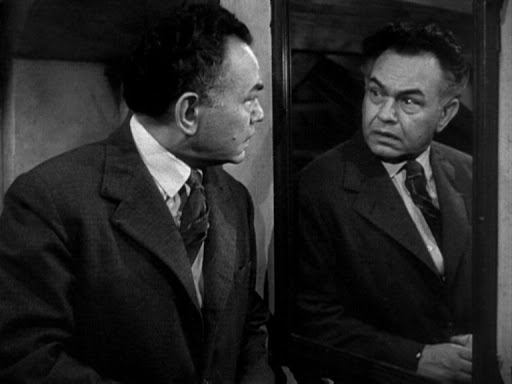
From the same John Farrow as Alias Nick Beal is another paranormal noir with another icon of the noir, Edward G. Robinson (1949’s White Heat tough guy) here playing John Triton “The Mental Wizard” a travelling mentalist act with no illusions of being any more than an entertainer or a con who inexplicably begins having real premonitions during a mental act and realizes his power after saving one boy’s life – telling his parents to go home only to find him having accidentally started a fire with matches – and, brushing this off as coincidence, killing another boy after failing to save him from a traffic accident Triton has a premonition of.
Initially working it into his act and helping his partner Whitney Courtland (Jerome Cowan) to win some money betting on horses and speculate on oil rigging land, the power reveals that his girlfriend Jenny will die giving birth to their child, driving Triton to reluctantly flee from not only Jenny but the world at large and the responsibility his powers impose on him into a life of seclusion. But when news gets to him of Jenny’s death in birth of a daughter Jean by the now rich Whitney, he comes to see his flight did nothing to save her, and becomes disenfranchised with his ability to change the future.
Years pass before he runs into the now adult Jean (Gail Russell) and has a vision of her father dying in a plane crash. He tries to have her warn him but her boyfriend Elliott (John Lund) is skeptical and thinks he’s running a racket. In spite of Jean’s trust it is too late, the plane has already taken off, and ends up in wreckage. Soon Triton has visions of Jean’s death too, though only vague, a time, and date, presaged by fragmentary cryptic images, – crushed flowers, broken vases, and lion’s feet – and tries to save her life, while Elliott believes he is running a racket, trying to manipulate a young, wealthy, and vulnerable woman who has just lost her father and gets the police involved. With Elliott and police surveillance working against him Triton must work against a clock to discover the cause of Jean’s death and prevent it.
7. The Seventh Victim (1943)
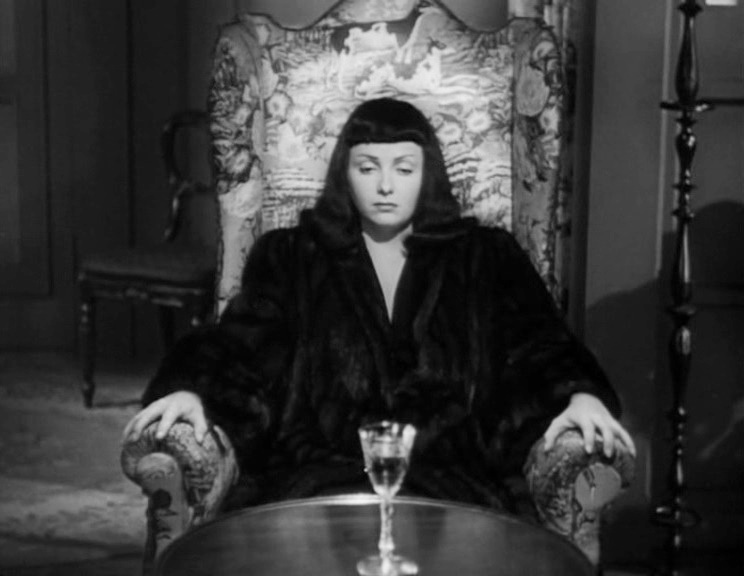
In many ways The Seventh Victim feels like a kind of companion piece to Cat People. Another film from producer Val Lewton, the directorial debut of Tourneur editor Mark Robson, the film is shot by the same Nicholas Musuraca, with Tom Conway reprising his Dr. Judd as a supporting, albeit evolved character, it serves up a similar occult mystery while taking its themes of occult practice to a darker spot of realism further from Cat People’s tongue in cheek b-horror roots.
The Seventh Victim follows the good girl Mary’s (Kim Hunter) departure from the cloistered security of her Catholic school to search for wayward sister Jacqueline (Jean Brooks) who has gone off the map in seedy Greenwich Village and left only a dangling noose in her rented room spelling despair and desperation. With the help of – or in spite of the hindrance of – the village’s many colorful characters, from the wiseguy detective Irving August (Lou Lubin) to Dr. Judd, now a pompous bestselling psychoanalyst running telekinetic trials as a party trick, Ward (Hugh Beaumont) Jacqueline’s secret husband, her dark mentor Esther Redi (Mary Newton), and Jason, a once great poet (Erford Gage) facing a ten year writer’s block, Mary chases Jacqueline down – manifesting here and there like a ghost – and finds her way onto a murder and the sinographic trail of a satanic cult that Jacquelin may have become caught up in.
Though sustaining an element of the whodunnit to the very end, the film also explores occult practice not merely as the cheaply supernatural but as a philosophy caught between nihilistic amorality and unforgiving doctrine, and a hotbed for desperate minds, the victims and villains it attracts. Suicide haunts the film from the moment the noose is discovered in Jacqueline’s room, and we are taken into a world ever conscious of its teetering on extinction.
8. I Walked With a Zombie (1943)
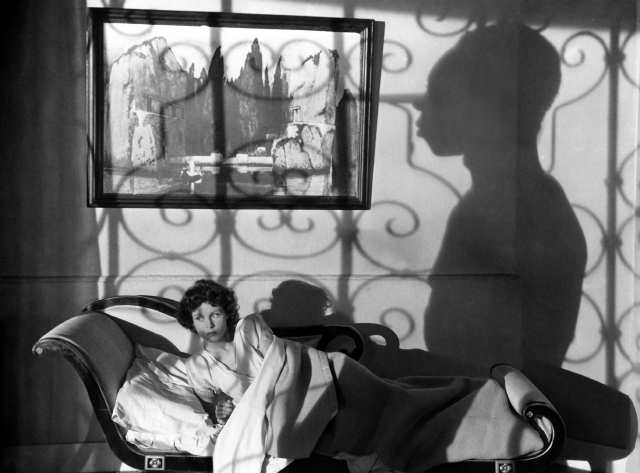
Directly following Cat People Jacques Tourneur and Val Lewton’s I Walked With a Zombie probed Haitian voodoo and the then-unfamiliar (and pre-Romero) mythology of the zombie in a film that achieves both a rare atmosphere of supernatural intrigue and a surprisingly respectful take on voodoo ceremony for an American film of the 1940s.
Canadian nurse Betsy Connell (Francis Dee) takes a job on the remote Carribean island of Saint Sebastian, home to the Fort Holland sugar plantation, as private care-aid to plantation owner Paul Holland’s (Tom Conway) catatonic wife Jessica (Christine Gordon). Betsy’s arrival is marked by bad omen after bad omen, and the island itself seems haunted by the sin of its history of slavery, and its statue of Saint Sebastian, a figurehead from the island’s first slave ship, known to the island’s black population as ‘Ti-Misery’, and standing to both the whites and the blacks as a symbol of twisted resurrection, eternal life as eternal suffering. Betsy discovers all is not as it seems at Fort Holland, nor with Jessica, who spends the nights wandering the halls of Fort Holland in a trancelike break from her usually bed bound catatonia, and whose diagnosis of spinal nerve damage from a rare jungle fever starts to seem less likely than voodoo zombification.
Betsy comes to believe, against the advice of Holland and his mother Mrs. Rand (Edith Barrett), that where science has failed voodoo practice may be able to save Jessica, and steals her away one night to a night ceremony in the woods, where Tourneur builds the film toward a documentarylike observation of untranslated and uninterpreted tradition – a raw kinetic energy of dancers, the swordplay of the ceremony-leader sabreur (an uncredited Jieno Moxzer) and the presence of horrific zombie-watchman Carrefour played by an eyeball-popping Darby Jones.
9. Kiss Me Deadly (1955)
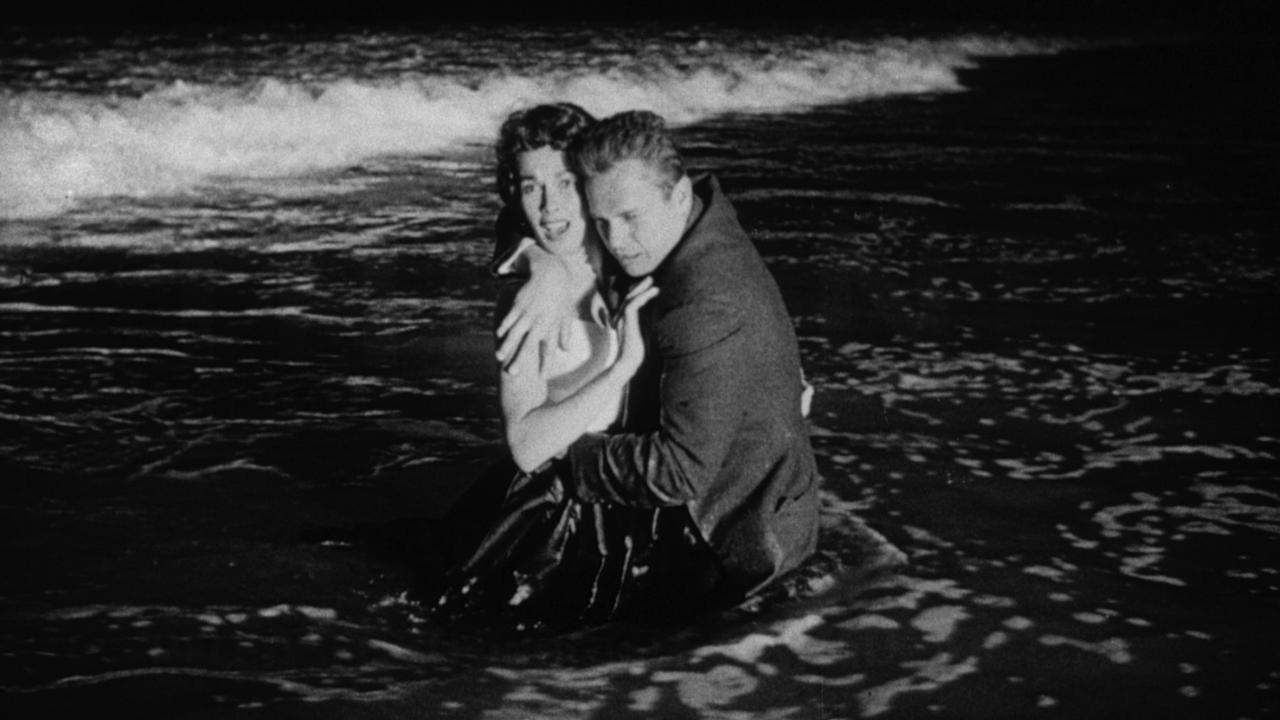
Loosey from the novel of the same name by hardboiled writer Mickey Spillane, Kiss Me Deadly carries a punch in its wordplay like nothing else on the list. Though save for the shocker finale, it plays out like any other tough guy noir of the 1950s, Kiss Me Deadly is a play on the myth of Pandora’s Box, and self-destructive drive of forbidden knowledge.
Mike Hammer, P.I. (Ralph Meeker) picks a desperate hitchhiker up one night after she throws herself out in front of his car— Christina (Cloris Leachman) an insane asylum escapee. But it turns out she amounts to hot property as they’re quickly descended upon by thugs – no hospital scrubs – who knock Hammer out, kill Christina, and try to dispose of the two pushing them in Hammer’s car off a cliff. Of course our pulp hero Hammer survives.
The cops grill him with all kinds of questions. Hammer smells too much interest in this Christina and connects her to something big, and so pursues her murder himself, if not also for revenge. Playing rival to Hammer a Lt. Pat Murphy (Wesley Addy) takes it upon himself to revoke Hammer’s P.I. license, and his gun licence too. Hammer meets Lily Carver (Gaby Rogers), Christina’s old roommate who puts Hammer onto the trail of a mysterious box Christina had some lead on, a classic movie mcguffin wanted by everyone powerful in town, from the gangster kingpin Carl Evello (Paul Stewart) to the street thugs he’s paying for its recovery and high members of government, and containing who can say what.
While this is almost stock for a noir Aldritch’s movie makes something supernatural of this Pandora’s Box, filling it with “the head of the Medusa” and blasting a white light out of it whenever it is momentarily opened – referenced by the briefcase in Tarantino’s Pulp Fiction and prefiguring the deadly alien mcguffin of Alex Cox’s Repo Man. The box foretells apocalypse, as much supernatural as nuclear in nature – referenced to Project Manhattan, and promises if opened the bringing of the apocalypse. But some people just don’t know how to take no for an answer.
10. Night Tide (1961)
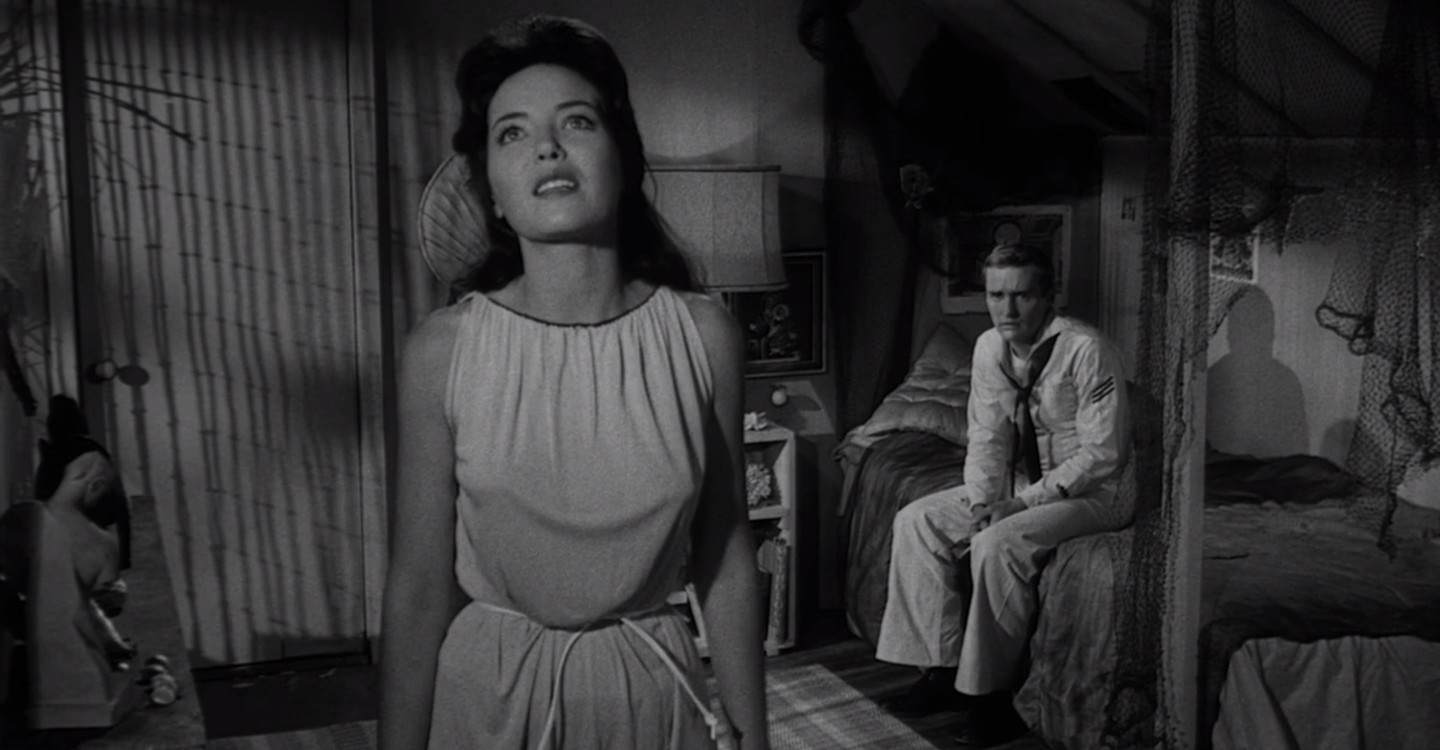
Coming at the end of the noir era but holding over its shadowy vision and more importantly the paranormal psycho-sexual themes of the Lewton noirs is this 1961 b-horror from director Curtis Harrington as Dennis Hopper’s first starring role.
In Santa Monica young sailor Johnny (Hopper) is on shore leave, and spends his nights wandering the boardwalk and hanging out in jazz bars. In one such bar he meets the beautiful and mysterious Mora (Linda Lawson) hiding from someone and taking off into the night. Despite her caginess or maybe because of it Johnny becomes interested and pursues her, discovering she is a local carney who plays by day the part of mermaid in the show of a Captain Murdock (Gavin Muir) who claims her to be a siren found on the Greek island of Mykonos.
Mora continues to be pursued by a sinister gypsy woman (occultist Marjorie Cameron) and Johnny meanwhile is warned off from Mora by her landlord (Tom Dillon) and his daughter Ellen (Luana Anders) whom Johnny befriends, claiming she is some kind of cursed and responsible for the death of her two past lovers, both of which turned up drowned in the harbor. The further Johnny follows Mora the further he descends into the world of the impossible, of magic and hallucination.
With an undercurrent of the psychological and effects scenes that dive into the creature-feature spectacle Night Tide is both a poetic sailor’s ballad and a last echo of the paranormal noir giving way to the Roger Corman creature feature of the 1960’s.